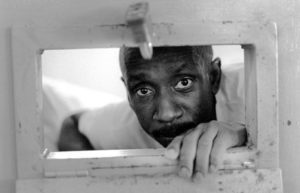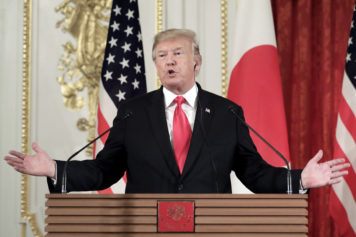
Photo: Adam Shemper
In a nation that is governed by racial biases and the criminalization of Blackness, so is the U.S. system of mass incarceration governed through racial injustice, discrimination and racial disparities. And the implementation of solitary confinement is by no means an exception. Through implicit bias, white guards are making the decision to subject Black and Latino men to this cruel and inhumane form of punishment in much larger numbers than white inmates.
As The Atlantic reported, the practice of solitary confinement disproportionately affects Black and Latino men. A study from the Association of State Correctional Administrators and Yale Law School found that these men are over-represented in solitary — also known as the “hole,” “lockdown,” “segregated housing unit” or the “SHU,” administrative segregation, “restricted housing unit” and other terms — when compared to the general prison population.
The study, which examined 2015 data on 54,000 inmates from nearly all states across the country, the District of Columbia, the Virgin Islands and the Federal Bureau of Prisons, found that white men were underrepresented in solitary confinement in nearly all of the jurisdictions studied (36 of 43).
Meanwhile, Black men were 40 percent of the total prison population, but they were 45 percent of people placed in solitary. Further, in 31 of the 43 jurisdictions examined, Black men were locked up in segregated housing beyond their numbers. Meanwhile, Latino men, who are 20 percent of the prisoners, are 21 percent of prisoners thrown into the hole. The researchers found that Latinos were over-represented in solitary confinement in 22 of 43 jurisdictions.
Beyond the numbers themselves, what is particularly eye-opening are the circumstances and the process by which prison guards decide which inmates should go on lock down. As Andrea Armstrong, a law professor at Loyola University New Orleans, said in her paper called “Race, Prison Discipline, and the Law,” the people who work in penal institutions are susceptible to the same unconscious biases as those in the greater society. Consequently, racial stereotypes govern prison administration and the decision to lock up someone for insubordination or angry behavior, as Armstrong told The Atlantic. A guard may perceive a Black inmate as a greater threat or a greater disciplinary problem than his white counterpart, regardless of behavior, Armstrong wrote, leading to more harsh discipline for Black offenders compared to whites. Similarly, the study’s authors found that the same mechanisms that are incarcerating Black people beyond their numbers are also at play in sending them to solitary confinement.
As the Intercept reported, a study released by health officials in the New York City Department of Health and Mental Hygiene (DOHMH) showed that Black and Latino inmates were far more likely to be punished with solitary confinement than whites, and less likely to receive a mental illness diagnosis. The study found that Black people in the New York City jail system known as Rikers Island were 2.52 times more likely than whites to be placed in solitary alone for 22 to 24 hours a day, while Latinos were 1.65 times more likely. In addition, as Blacks and Latinos were 40 and 46 percent of the jail population, they were 16 percent and 13 percent, respectively, of those admitted to the jail’s mental health service. (New York City also has a large Afro-Latino population, with Dominicans as the largest group of Latinos, followed by Puerto Ricans, according to the CUNY’s Center for Latin American, Caribbean and Latino Studies.)
Meanwhile, whites were 9 percent of the prisoners, but 22 percent of mental health patients. According to the study, white inmates were more likely to be diagnosed with more “legitimate” mental disorders such as anxiety or depression, which respond well to medication, as well as “serious mental illnesses” such as schizophrenia or bipolar disorder, which exempt inmates from solitary confinement and allow them to obtain benefits after release. “Jail is a microcosm of society,” Dr. Daniel Selling, who ran mental health services at Rikers, told The Intercept. “A lot of society thinks that Black and brown people are criminals.”
“Racism is a blunt thing” in jail, said Five Mualimm-ak, a survivor of five years in solitary confinement in the New York state prisons and the director of Incarcerated Nation, a group advocating for an end to solitary confinement. “You start talking to people and they’ll say, ‘Well, I was put in here because a guard said, ‘I don’t like Black people.’ Like, literally. They’re like, ‘Hey, n*****, you’re going to the box,’” he told The Intercept.
The study also found that a Black or Latino inmate was more likely than a white inmate to be diagnosed with a mental illness in connection with solitary confinement, and later in his jail stay. This means he is more likely to be diagnosed because he was already psychologically damaged by solitary or because he was acting out in order to avoid the hole, doing things like cutting himself or setting his cell on fire. Of those in the study who received a late mental health diagnosis, 40 percent of Blacks, 26 percent of Latinos but only 9 percent of whites had been sent to solitary while incarcerated.
The racial imbalance of prison staff as opposed to inmates in some jurisdictions only serves to exacerbate the problem of racial bias in prison punishment. For example, New York has a significant racial disparity, with whites making up 85 percent of the state’s 30,000 corrections staff, according to The Times Union. At the same time, half of the 56,000 prisoners in New York state are Black, but only 11 percent of prison staff is Black. And while 25 percent of the inmates are Latino, though only 3 percent of the staff are members of that demographic.
Not only is solitary confinement ineffective, but it also is harmful, according to experts. U.N. Special Rapporteur on Torture, Juan Méndez, concluded that isolating human beings for over 15 days amounts to torture and should be banned, as The Intercept reported in 2015. However, in the U.S., some prisoners remain in solitary for months, years and even decades at a time. Last year, President Obama reviewed the practice of solitary confinement and early this year he announced an end to solitary confinement for juveniles in federal prison, also calling for an end to the practice in general.


